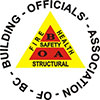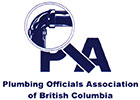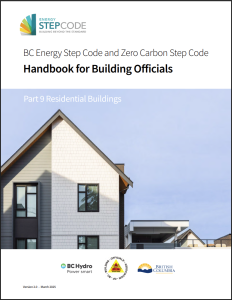BC Energy Step Code and Zero Carbon Step Code Handbook for Building Officials
Part 9 Residential Buildings
Building Inspection Video Series
This series was created in partnership with BC Hydro and the Community Energy Association.
BOABC Part 1 Overview
This video describes the start of a typical day and general responsibilities of a building official.
BOABC Part 2 Compliance to Code
This video describes the permitting process and the necessary permit application steps as well as the building official’s role and tasks during this process.
BOABC Part 3 Siting, Foundation, Underslab
The building process begins with a footing inspection, ensuring the proposed structure is correctly sited within the property setbacks before concrete is poured. Inspectors assess the soil conditions, zoning compliance, and overall site accuracy to prevent errors that could affect neighboring properties.
Once the footings are approved, the next stage involves inspecting the foundation walls, verifying reinforcement, and ensuring the correct building height above grade. Following foundation approval, the under-slab plumbing inspection covers mechanical piping, radon system installation, drainage, waterline placement, and the soil gas barrier. Additional checks are required for heated slabs and walkout basements to confirm proper installation.
BOABC Part 4 Framing
For simple wood-frame buildings, the inspection process begins at the point where the structure connects to the concrete foundation. Inspectors check anchorage, framing components such as wall studs, sheathing, nailing patterns, window openings, beams, and stair structures, working up to the roof system.
A critical part of the process is reviewing engineered roof truss certificates and bracing requirements. The framing inspection is one of the most detailed, requiring verification that the structure matches approved plans. Inspectors start from the roof trusses, comparing them against stamped engineering documents to ensure compliance.
BOABC Part 5 Plumbing
The rough plumbing inspection typically follows the framing inspection and may be conducted simultaneously.
BOABC Part 6 Pre-Drywall
The exterior air barrier inspection is now a separate process from the interior insulation and vapor barrier inspection due to increasing building complexity. The exterior air barrier is typically installed before siding, while the interior air barrier is inspected alongside insulation before drywall installation. Builders may opt for a mid-construction air tightness test at this stage to identify and seal air leaks before drywalling.
In this process, penetrations such as windows, wiring, and plumbing must be properly sealed to prevent air leaks, moisture intrusion, and condensation risks. Using tools like a smoke pencil helps detect leaks before they become hidden behind drywall. Proper sealing ensures an airtight assembly, reducing energy loss and improving overall building performance.
BOABC Part 7 Occupancy
The final inspection stages include the occupancy inspection and addressing any deficiencies. The occupancy inspection ensures the building is safe for occupants, checking for safety features such as smoke alarms, egress windows, handrails, and guardrails. It also includes reviewing mechanical systems, plumbing, and finishes for completeness.
Additionally, the inspection verifies energy compliance, including air tightness testing and as-built energy reports. Inspectors confirm proper installation of features like ventilation systems, radon piping, and future cooling ports. Final sign-offs are obtained for plumbing, mechanical systems, and registered professional reviews.
The process concludes with a final evaluation of insulation coverage, hot water tank insulation, and landscaping or exterior compliance. Any minor deficiencies are corrected before granting occupancy approval.



